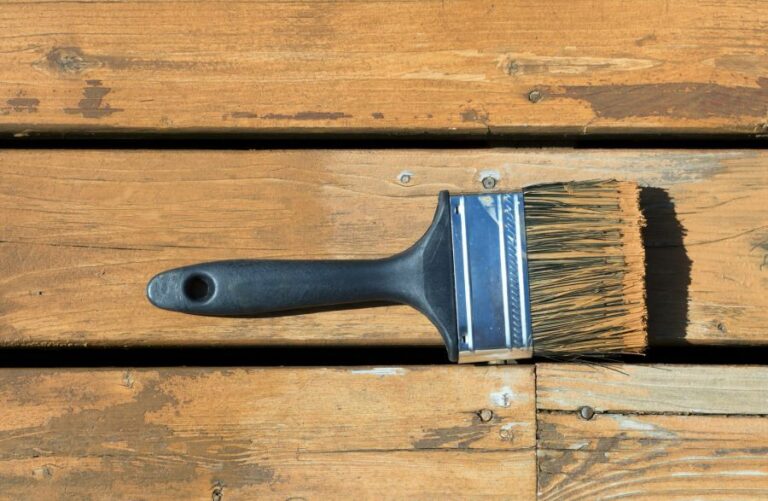Caulking Edges: Achieve Smooth Paint Finish. What Pros Say
Are you tired of unattractive, uneven paint finishes on your walls, furniture, or other paintwork? Worry not because we have the solution to achieving that perfect, smooth paint finish you’ve always desired! It’s time to understand the art of caulking edges, and we are here to guide you through every step.
Caulking edges, achieve smooth paint finish:
Choose the right caulk (latex or acrylic-latex) for your interior painting job to achieve a smooth paint finish with caulked edges. Prepare the surface by cleaning and removing old caulk, optionally taping off the area. Apply the caulk using proper application techniques, and paint over it once dry. Priming the caulk may be necessary for a more uniform finish.

Discover the secrets to achieving a flawless paint finish with perfectly caulked edges. Our comprehensive guide will teach you the techniques and tricks professional painters use. Read on to transform your painting projects from ordinary to extraordinary!
Contents
- 1 Attain a Flawless Paint Finish with Caulked Edges
- 2 Mastering Smooth Finishes using Caulk in Edges
- 3 Painting Walls: Should You Caulk the Edges?
- 4 Achieve Precise Paint Lines with the Help of Caulk
- 4.1 • What is Caulk?
- 4.2 • Tools and Materials You Will Need
- 4.3 • Step 1: Prep the Surface
- 4.4 • Step 2: Apply Painters Tape
- 4.5 • Step 3: Apply the Caulk
- 4.6 • Step 4: Smooth Out the Caulk
- 4.7 • Step 5: Paint Over the Caulk
- 4.8 • Step 6: Remove Painters Tape While Paint is Still Wet
- 4.9 • Step 7: Clean Up and Admire
- 5 Painting Techniques: Perfecting Edges with Caulk
Attain a Flawless Paint Finish with Caulked Edges
A smooth paint finish is essential for a professional-looking result when painting walls, trim, and other surfaces. Caulking edges play a crucial role in creating a seamless and polished appearance.
• Choosing the Right Caulk
Selecting the right caulk is critical to obtaining a smooth finish. Multiple types of caulks are available on the market, but for most interior painting jobs, a high-quality latex or acrylic-latex caulk should suffice.
– Latex Caulk
Latex caulk is easy to use, water-based, and cleans up well. It is ideal for filling gaps and cracks in trim, baseboards, and other interior surfaces, including drywall and plaster.
Latex caulk is flexible, paintable, and can be cleaned with water before it dries. This type of caulk is generally less expensive than acrylic-latex caulks.
– Acrylic-Latex Caulk
Acrylic-latex caulk is a combination of acrylic and latex, resulting in a product that has higher adhesion and increased flexibility. It is paintable, offering compatibility with most interior paints.
Acrylic-latex caulk has longer durability than traditional latex caulk, making it suitable for areas that may experience more temperature fluctuations or movement.
• Preparing the Surface
Properly preparing the surface for caulking is essential for a smooth paint finish. Follow these steps to ensure the best results:
- Clean the Surface: Remove all dirt, dust, and debris from the area being caulked using a damp cloth or sponge. A clean surface allows the caulk to bond and ensures an even paint application.
- Remove Old Caulk: Using a caulk-removal tool or utility knife, carefully remove any old caulk from the area. This ensures that the new caulk adheres properly and creates a smooth, seamless appearance.
- Tape Off the Area (Optional): To create clean, straight lines, apply painter’s tape along the edges where the caulk will be applied. Ensure that the tape is securely pressed down and there are no gaps where the caulk can leak through.
• Applying the Caulk
To achieve a smooth finish, it is crucial to follow the proper application techniques:
- Cut the Caulk Tube Tip: Using a utility knife, cut the tip of the caulk tube at a 45-degree angle, ensuring the opening is the appropriate size for the gap being filled. A smaller opening results in finer lines, while a larger opening is necessary for broader gaps.
- Load the Caulking Gun: Place the caulk tube into the caulking gun with the tip facing forward. Push the plunger until it makes contact with the back of the caulk tube.
- Apply the Caulk: Gently squeeze the caulking gun’s trigger and steadily move the tip along the edge you are caulking. Aim for a smooth, continuous bead of caulk without voids or gaps.
- Smooth the Caulk: Using a damp finger or a caulking tool, smooth the applied bead of caulk into the gap or joint. Wipe away any excess using a damp cloth or sponge.
- Remove the Tape (if applicable): Carefully remove the painter’s tape before the caulk dries, pulling it away from the caulked area at a 45-degree angle.
• Painting Over the Caulk
Allow the caulk to fully dry before painting, according to the manufacturer’s recommended drying time. Once dry, you can proceed with painting your surface as usual. Using high-quality paint and applying even coats will help to achieve that smooth paint finish.
– Priming the Caulk
In some cases, it might be beneficial to apply a primer over the caulk before painting. This is especially true when working with dark paint colors or uneven surfaces. Priming can help create a more uniform finish, allowing the paint to adhere better to the caulked area.
• Conclusion
Caulking the edges is a vital step in achieving a smooth paint finish for your project. By choosing the right caulk, properly preparing the surface, and following expert application techniques, you can create a seamless, professional look.
Mastering Smooth Finishes using Caulk in Edges
• Selecting the Right Caulk
The first step in achieving a smooth finish with caulking is choosing the right type of caulk for your project. Different materials and surfaces require specific types of caulk to ensure proper adhesion and durability. Some common types of caulk include:
- Silicone: Best for non-porous surfaces like glass, metal, and tile. It’s also waterproof and flexible, making it ideal for bathrooms and kitchens.
- Latex: Also known as painter’s caulk, it’s easy to apply and clean up. It works well on porous surfaces like wood and drywall.
- Polyurethane: Strong and versatile, it’s ideal for exterior projects, such as sealing gaps in siding or windows.
Before purchasing your caulk, take into account its flexibility, adhesion, and weather resistance, and the recommended surfaces on the label.
• Prepare the Surface
To ensure a smooth finish, thoroughly clean the area you’ll be caulking. This will ensure a better bond between the caulk and the surface. Remove any old caulk, dirt, grease, or grime that might prevent the new caulk from adhering properly. If required, use a caulk remover or scraper to help remove old caulk residue.
• Gather Your Tools
Aside from the tube of caulk, you’ll be using, you’ll need a few other tools for a smooth application. These include:
- Caulking gun: Choose one with an adjustable pressure setting for better control when applying the caulk.
- Utility knife or scissors: To cut the nozzle at the desired angle and size.
- Caulk spatula or finishing tool: This can help shape and smooth the caulk bead.
- Soapy water or rubbing alcohol: Useful for smoothing and cleaning up.
- Rags or paper towels: To wipe away any excess caulk or for cleanup.
• Applying the Caulk
Before you start caulking, it’s crucial to practice your technique to ensure a smooth finish. Hold the caulking gun at a 45-degree angle and slightly ahead of the caulk bead.
Apply even pressure to the gun as you move it along the joint, making sure that the nozzle is in constant contact with both surfaces. Keep a steady pace and avoid stopping mid-way.
To achieve a professional-looking finish, keep these tips in mind:
- Cut the nozzle at the right size and angle: Too small of an opening will leave you with an insufficient amount of caulk, while too large can create a messy result. Generally, a 45-degree angle will work best for most caulking jobs.
- Use the right caulking gun: An adjustable pressure caulking gun will give you better control over the bead size and prevent excessive caulk usage.
- Maintain consistent pressure: Apply even pressure to the caulking gun trigger to ensure a uniform caulk bead.
• Smoothing and Finishing
After applying the caulk, use a caulk spatula or your finger to smooth out the bead. To prevent the caulk from sticking to the tool, dip it in a solution of soapy water or rubbing alcohol.
Gently glide the tool over the bead, pressing down slightly, and make sure to maintain a consistent speed. Wipe away any excess caulk on your tool with a rag or paper towel.
• Cleanup and Maintenance
Inspect the caulk line and clean up any excess or misplaced caulk with a rag or paper towel dampened with soapy water or rubbing alcohol. If the caulk has already started to dry, you can use a utility knife to trim away any imperfections carefully.
Allow the caulk to cure according to the manufacturer’s instructions before exposing it to moisture or painting over it. To ensure the longevity of your caulking work, inspect it periodically for any signs of wear and reapply or touch up as needed.
• Conclusion
Achieving a smooth finish with caulking requires selecting the right type of caulk, preparing the surface, using proper application techniques, and paying attention to detail. With practice and the right tools, you can master this skill and achieve professional-looking results on your caulking projects.
Remember that preventative maintenance and periodic inspections can extend the life of your caulking job, ensuring your surfaces remain protected and look great for years to come.
Step | Description |
|---|---|
1 | Choose the right type of caulk for your project (e.g., silicone, acrylic, or polyurethane). |
2 | Prepare the surface by cleaning it thoroughly and removing any old caulk or debris. |
3 | Apply painter’s tape to the edges of the area you’re going to caulk, if necessary, to create a clean, straight line. |
4 | Cut the tip of the caulk tube at a 45-degree angle and insert it into a caulking gun. |
5 | Apply steady pressure on the caulking gun to create a smooth, even bead of caulk along the gap or seam you’re filling. |
6 | Smooth the caulk bead with a wet finger, a damp cloth, or a specialized caulking tool to create a neat, finished appearance. |
7 | Remove the painter’s tape (if used) before the caulk starts to dry to avoid peeling away any of the fresh caulk. |
8 | Allow the caulk to cure according to the manufacturer’s instructions for the best results. |
Painting Walls: Should You Caulk the Edges?
Caulking the edges of walls before painting serves several purposes: creating a smooth, seamless appearance, preventing moisture intrusion, and making the paint job look professional.
• The Importance of Caulking
Caulking the edges of walls is essential to achieve a polished and finished look. When you paint without caulking, gaps and cracks may show through the paint, creating an unprofessional appearance.
Additionally, caulking prevents moisture from entering these gaps and potentially causing mold, mildew, or rot.
The U.S. Department of Energy emphasizes the importance of caulking to seal air leaks around doors and windows, which can significantly reduce energy costs. The same principle applies to walls, where caulking creates a barrier that prevents air infiltration.
• Selecting the Right Caulk
Before starting your painting project, choose the appropriate caulk for your application. For walls, opt for a paintable latex or acrylic caulk that offers flexibility and durability. Avoid using silicone caulk, as this type does not adhere well to paint.
– Expert Tip
I recommend using a paintable caulk that contains silicone, which provides the flexibility of silicone while allowing the caulk to adhere well to paint.
• Preparing the Surface
Before applying caulk, prepare the surface to ensure proper adhesion and a seamless appearance. Clean the wall edges, removing any dust, dirt, or old paint. Also, remove any old or loose caulk.
– Expert Tip
I recommend using a scraper or utility knife to carefully remove old caulk without damaging the surrounding surface.
• Applying the Caulk
When applying caulk, follow these steps for the best results:
- Cut the caulk tube nozzle at a 45-degree angle, leaving a small opening.
- Load the caulk tube into a caulk gun.
- Apply gentle, consistent pressure to the caulk gun trigger to create a smooth, even bead of caulk along the edge of the wall.
- Use a damp finger or a caulk smoothing tool to smooth the caulk bead, ensuring a seamless appearance.
– Expert Tip
I recommend applying caulk in sections and smoothing it before the caulk dries. This prevents the caulk from forming a skin, which can make it difficult to create a smooth finish.
• Allow for Drying Time
Caulk manufacturers typically recommend waiting at least 24 hours for the caulk to dry completely. However, some fast-drying caulks may be paintable after just a few hours. Follow the manufacturer’s guidelines.
– Expert Tip
I recommend waiting 48 hours for the caulk to dry, especially in high humidity or low temperatures, to ensure proper drying and adhesion.
• Priming and Painting
Before painting, apply a primer to the caulked area. The primer creates a consistent surface for the paint to adhere to and ensures a uniform appearance. Once the primer is dry, paint the wall as desired.
• When Not to Caulk
While caulking the edges of walls provides many benefits, there are certain situations where it may not be necessary or recommended. For example, if two walls meet at a sharp angle or if the gap between walls is minimal, caulking may not be needed.
Additionally, if moisture or mold problems are present, addressing the underlying issues before caulking is essential.
– Expert Tip
I recommend consulting with a professional if you’re unsure whether to caulk a specific area or if there are existing moisture issues.
• In Conclusion
Caulking the edges of walls before painting offers numerous benefits, including a clean, professional appearance, protection against moisture, and energy efficiency. Proper preparation, application, and drying time are essential for successful caulking.
By following these guidelines and utilizing expert tips, you can achieve a paint job you can be proud of.
Step | Description |
|---|---|
1 | Remove any old caulk or debris from the edges of the walls. |
2 | Ensure surfaces are clean, dry, and dust-free. |
3 | Apply painter’s tape along the edges to protect the adjacent surfaces. |
4 | Cut the tip of the caulk tube at a 45-degree angle, and load it into a caulking gun. |
5 | Apply a bead of caulk along the edges of the wall, ensuring a smooth and even line. |
6 | Smooth and remove any excess caulk using a damp finger or a caulk-smoothing tool. |
7 | Allow the caulk to dry completely according to the manufacturer’s instructions. |
8 | Proceed to paint the walls as desired, using a paintbrush or roller. |
9 | After the paint dries, carefully remove the painter’s tape to reveal clean, neatly caulked edges. |
Achieve Precise Paint Lines with the Help of Caulk
Creating clean, straight paint lines can be a challenging task, especially for amateur painters or those who don’t have access to professional tools.
Try this technique using caulk to achieve those perfect paint lines that will make your painting project look seamless and professionally done.
• What is Caulk?
Caulk is a versatile, flexible material commonly used to seal gaps or cracks in buildings, pipes, or other structures. It typically comes in a tube format that can be easily applied with a caulk gun or other tools.
Caulk can be found in various types, each formulated for a specific purpose. For painting projects, we recommend using a paintable latex caulk.
• Tools and Materials You Will Need
Before we dive into the step-by-step process, let’s gather the necessary tools and materials:
- Latex caulk
- Caulk gun
- Painters tape
- Rags or paper towels
- A bucket of water
- A thin, flat tool such as a putty knife or a plastic card
- Paint and painting tools (rollers, brushes, etc.)
• Step 1: Prep the Surface
Before applying any caulk, it’s crucial to prepare the surface you’ll be painting. Make sure the area is clean and dry, as dirt or moisture can negatively affect the adhesion of caulk and lead to less precise paint lines.
Remove any dust or debris that may be present and fill holes or cracks with filler or another appropriate material. Allow any repairs to dry properly before proceeding.
• Step 2: Apply Painters Tape
Next, apply painter’s tape to protect all surfaces not meant to receive paint. Align the edge of the tape with the line you want to paint, ensuring a straight, consistent edge. Press the tape firmly against the surface to minimize the risk of paint seeping through the gaps.
• Step 3: Apply the Caulk
Load a tube of latex caulk into the caulk gun and cut the nozzle at a 45-degree angle. Apply a thin bead of caulk along the edge of the painter’s tape where you want the paint line to be.
Remember, a small amount of caulk is enough since we are only trying to seal the gaps between the tape and the surface.
• Step 4: Smooth Out the Caulk
Dip your putty knife or plastic card in the bucket of water to wet the edge. Then, gently run the tool along the caulk bead to smooth and flatten the caulk. Maintaining consistent pressure throughout this step is essential, as uneven pressure can result in an uneven, wavy paint line.
Wipe away any excess caulk with a wet rag, and repeat this process along the entire length of the desired paint line.
• Step 5: Paint Over the Caulk
Now that the caulk is in place, you can begin painting. Apply your paint directly over the caulked edge using a brush, roller, or other preferred painting tools. The caulk should prevent any paint from bleeding under the masking tape, ensuring a clean, straight paint line.
• Step 6: Remove Painters Tape While Paint is Still Wet
While the paint is still wet, gently remove the painter’s tape at a 45-degree angle from the painted surface. This will help maintain a sharp paint line by preventing the paint from peeling together with the tape.
If you encounter any spots where the paint has bled through, simply touch them up with a small brush.
• Step 7: Clean Up and Admire
Once the painter’s tape is removed, clean up any remaining caulk or paint residue with a wet rag. Allow the paint to dry completely before reattaching any fixtures or hardware or touching the area.
Finally, admire your handy work and enjoy the perfect paint lines you’ve achieved with the help of caulk!
By following these steps and recommendations, you can be confident that your painting project will have clean, professional-looking paint lines without the hassle of trying to achieve them by hand.
Steps | Instructions |
|---|---|
1 | Gather materials: painter’s tape, caulk, caulking gun, paint, paintbrush or roller, and a damp cloth. |
2 | Apply painter’s tape to the edge where you want a clean paint line. Make sure the tape is straight and firmly pressed down to prevent paint from seeping underneath. |
3 | Load the caulk into the caulking gun and cut the tip at a 45-degree angle. |
4 | Apply a thin bead of caulk along the edge of the tape where you want the paint line to be. Ensure that the caulk covers the entire edge and slightly overlaps both the tape and the wall. |
5 | Smooth the caulk with your finger or a damp cloth while ensuring a thin and even layer is maintained. |
6 | Allow the caulk to dry slightly but not completely. It should still be tacky and not fully set. |
7 | |
8 | Before the paint dries completely, carefully remove the painter’s tape, pulling it away from the paint line at a 45-degree angle. |
9 | Inspect the paint lines for any imperfections and touch them up as needed. |
Painting Techniques: Perfecting Edges with Caulk
Painting edges with caulking is a technique used by professional painters to achieve clean, crisp lines between two colors or surfaces. The practice involves using a small amount of caulk along the edges before painting and requires proper tools and techniques to ensure a high-quality result.
• Tools and Materials
To paint edges with caulking, you will need the following tools and materials:
- Caulking gun: A caulking gun allows for precision when applying the caulk.
- Painters caulk: Use a high-quality, paintable caulk designed for interior use, such as DAP ALEX Plus.
- Angled paintbrush: An angled paintbrush allows for accurate painting along edges.
- Razor Blade: A sharp razor blade is necessary for trimming excess caulk.
- Painters tape: Use painter’s tape to protect surfaces adjacent to the edge you’re painting.
- Drop cloth: Protect the floor and other surfaces from paint spillage and drips.
- Utility knife: A utility knife is crucial for cutting fine lines.
- Stiff bristle brush: This brush will help remove any remaining caulk debris after the trimming process.
• Step-by-Step Guide
– Step 1: Prepare the Surface
Before applying caulk, ensure the surface is clean, dry, and free from dust, dirt, and loose paint. Use a damp cloth to clean the edge, and allow it to dry completely. Also, make sure any adjacent surfaces are covered with painter’s tape and a drop cloth.
– Step 2: Apply the Caulk
Load the caulk into your caulking gun, and cut the tip at a 45-degree angle. Apply a thin, even bead of caulk along the edge you want to paint. Be sure to leave a small gap between the caulk and the edge for paint seepage.
– Step 3: Smooth the Caulk
Use a wet finger or caulking tool to smooth the caulk into a clean, continuous line along the edge. Wipe off any excess caulk on a damp cloth or paper towel.
– Step 4: Trim the Excess Caulk
Let the caulk dry for a minimum of one hour or according to the manufacturer’s instructions. Once dry, use a razor blade or utility knife to trim any excess caulk that has seeped under the painter’s tape.
– Step 5: Paint the Edge
Using an angled paintbrush, apply your chosen paint color along the edge, covering the caulk and any unpainted areas. Paint in long, smooth strokes to ensure an even finish. Allow the paint to dry according to the manufacturer’s recommendations.
– Step 6: Remove the Painter’s Tape
Remove the painter’s tape at a 45-degree angle, being careful not to pull off any paint or damage the surface. If you notice any rough areas or spots where the caulk bled through, use a stiff-bristle brush or fine-grit sandpaper to carefully remove the excess.
– Step 7: Inspect and Touch Up
Finally, inspect your work and make any necessary touch-ups with a small brush or roller.
• Expert Tips and Recommendations
- Choose the right caulk: I recommend using a high-quality, paintable caulk designed for interior use, such as DAP ALEX Plus.
- Proper caulk application: Apply a thin, even bead of caulk, leaving a small gap between the caulk and the edge to avoid excess paint seepage.
- Avoid over-smoothing: When using your finger or a caulking tool to smooth the caulk, avoid pressing too hard. This can cause the caulk to push under the tape or create uneven lines.
- Storing your caulking gun: After each use, release the pressure on the caulking gun to prevent the caulk from continuing to flow out of the tube.
- Remove tape while the paint is still damp: For the cleanest lines, remove the painter’s tape while the paint is still damp to avoid peeling dried paint along with the tape.
Painting edges with caulking can produce professional-looking results with minimal effort. By following this comprehensive guide, you’ll be able to achieve clean, straight lines when painting edges in your home. Happy painting!
Step | Description |
|---|---|
1 | Choose paintable caulk: Make sure you purchase a paintable caulk that will adhere properly to the surface you want to paint. |
2 | Prepare the surface: Ensure that the surface is clean, dry, and free from dust, dirt, and grease. Remove any old, cracked or peeling paint with a scraper or wire brush. |
4 | Apply the caulk: Hold the caulking gun at a 45-degree angle and apply the caulk in a smooth, continuous line along the edge. Move steadily, maintaining constant pressure on the trigger. |
5 | Smooth the caulk: Using a damp sponge, flat brush or your finger, smooth the caulk to achieve an even finish. |
6 | Allow the caulk to dry: Wait for the caulk to dry before painting over it. Check the drying time on the caulk’s label or packaging, as it may vary depending on the brand. |
7 | Paint the surface: Use a paintbrush or roller and apply the paint over the edges in smooth, even strokes. Ensure that the paint completely covers the caulk to achieve a seamless finish. |
8 | Allow the paint to dry: Wait for the paint to dry completely before applying additional coats or using the surface. |







